What is a telescope used for? A telescope is a tool or instrument that is used by the astronomers to see faraway objects in the space. The majority of telescopes, including all large telescopes, collect and concentrate light from the night sky using curved mirrors.
Telescopes have captivated our imaginations and expanded our understanding of the universe for centuries. They are like magical windows that allow us to peer into the depths of space and uncover the mysteries of distant celestial objects. But what exactly is a telescope used for? Let’s dive into the fascinating world of telescopes and explore their many applications, from unlocking the secrets of the cosmos to aiding in scientific research right here on Earth.
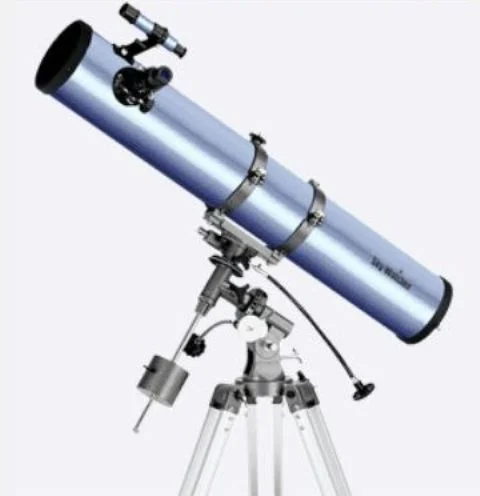
Brief Overview of Telescopes
Telescopes are optical instruments that gather and magnify light, allowing us to see objects that are far away. Whether you’re gazing at the moon through a backyard telescope or observing a distant galaxy with a powerful observatory, telescopes play a crucial role in expanding our view of the universe.
What is a telescope used for? Importance of Telescopes in Modern Science
In today’s world, telescopes are indispensable tools in various scientific fields. They have paved the way for groundbreaking discoveries and have helped scientists unravel the complexities of the cosmos. From identifying new planets to understanding the behavior of distant stars, telescopes are at the forefront of scientific exploration.
History of Telescopes
The Invention of the Telescope

The story of the telescope begins in the early 17th century. Hans Lippershey, a Dutch eyeglass maker, is often credited with inventing the first practical telescope in 1608. However, it was Galileo Galilei who famously used a telescope to observe celestial bodies, making significant contributions to astronomy.
Evolution Over the Centuries
Since its inception, the telescope has undergone remarkable transformations. In the 18th and 19th centuries, advancements in lens and mirror design allowed for more powerful telescopes. The 20th century witnessed the development of radio and space telescopes, revolutionizing our ability to observe the universe.
Key Historical Figures in Telescope Development
Several key figures have played pivotal roles in the evolution of telescopes. Galileo, Isaac Newton, and Edwin Hubble are just a few of the luminaries who have advanced our understanding of the cosmos through their work with telescopes.
Types of Telescopes
Optical Telescopes
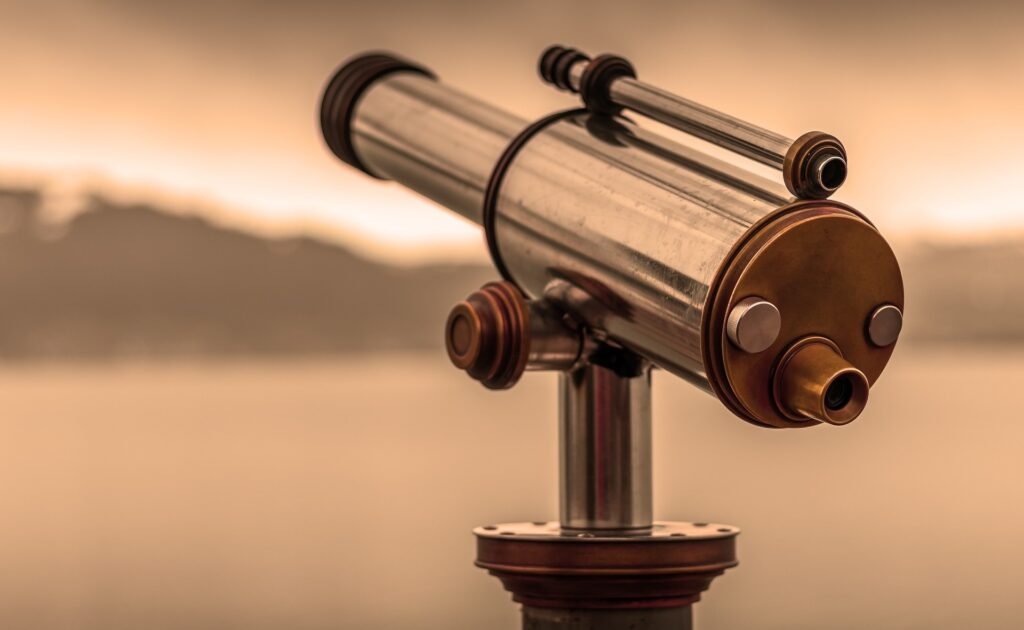
Optical telescopes are the most common type and are used to observe visible light from celestial objects. They come in three main varieties:
- Refracting Telescopes: These use lenses to bend and focus light. Invented by Galileo, refracting telescopes were the first type of telescopes ever used.
- Reflecting Telescopes: Developed by Isaac Newton, reflecting telescopes use mirrors to gather and focus light. They are popular due to their ability to eliminate chromatic aberration.
- Catadioptric Telescopes: These telescopes combine lenses and mirrors to offer a compact design with high-quality images. They are favored by amateur astronomers for their versatility.
Radio Telescopes
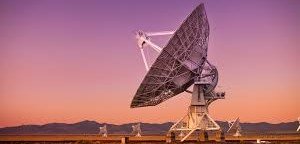
Radio telescopes capture radio waves emitted by celestial objects. Unlike optical telescopes, they can observe objects obscured by dust and clouds, providing insights into phenomena like pulsars and quasars.
Radio telescopes capture radio waves emitted by celestial objects, offering a unique perspective on the universe. Unlike optical telescopes, which observe visible light, radio telescopes can detect radio waves, which have much longer wavelengths. This allows them to observe objects and regions in space that are often obscured by dust and clouds, making them invaluable tools for studying the cosmos.
One of the key advantages of radio telescopes is their ability to observe through interstellar dust. Optical telescopes can be hindered by clouds of gas and dust that block visible light. In contrast, radio waves can penetrate these obstacles, revealing hidden structures and phenomena. This capability has led to significant discoveries, including the detection of complex molecules in space, the mapping of the structure of our galaxy, and the study of star formation in dusty regions.
Radio telescopes have been instrumental in discovering and studying exotic astronomical objects like pulsars and quasars. Pulsars are highly magnetized, rotating neutron stars that emit beams of radio waves from their magnetic poles. These beams sweep across Earth like a lighthouse, creating regular pulses of radio waves that can be detected by radio telescopes. Quasars, on the other hand, are incredibly bright and distant objects powered by supermassive black holes at the centers of galaxies. They emit tremendous amounts of energy, including radio waves, making them some of the most luminous and powerful objects in the universe.
The insights provided by radio telescopes have revolutionized our understanding of the universe. By capturing radio waves, these telescopes have uncovered phenomena and objects that are invisible to optical telescopes, offering a more complete and nuanced picture of the cosmos. As technology advances, radio telescopes continue to play a crucial role in astronomical research, pushing the boundaries of our knowledge and deepening our appreciation of the vast and dynamic universe we inhabit.
Infrared Telescopes
Infrared telescopes detect heat emitted by celestial objects. They allow astronomers to observe cooler objects like star-forming regions and distant galaxies hidden from optical telescopes.
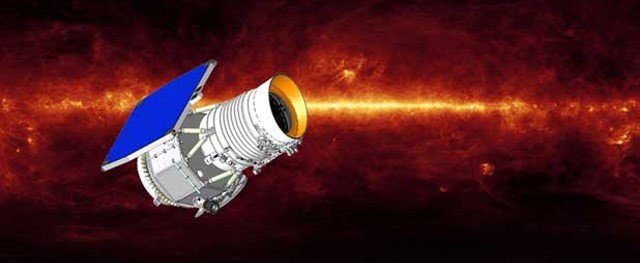
Infrared telescopes are essential tools in modern astronomy, designed to detect heat emitted by celestial objects. Unlike optical telescopes, which observe light in the visible spectrum, infrared telescopes are sensitive to longer wavelengths of light, enabling them to see objects that are not hot enough to emit visible light. This capability allows astronomers to observe a wide range of phenomena that would otherwise remain hidden.
One of the key advantages of infrared telescopes is their ability to peer through dense clouds of gas and dust that often obscure star-forming regions. These clouds absorb visible light but allow infrared light to pass through, making it possible to study the early stages of star formation and the environments around young stars. By observing in the infrared, astronomers can gain insights into the processes that lead to the birth of stars and planetary systems.
Infrared telescopes are also invaluable for studying distant galaxies. Many of these galaxies are so far away that their light has been stretched into the infrared part of the spectrum due to the expansion of the universe. Observing these galaxies in infrared allows astronomers to investigate their properties, such as their structure, formation, and evolution, providing a clearer picture of the universe’s history.
Additionally, infrared observations can reveal cooler objects in space, such as brown dwarfs and exoplanets. Brown dwarfs are substellar objects that do not have enough mass to sustain nuclear fusion, making them much cooler and fainter than stars. Infrared telescopes can detect the faint heat they emit, offering a glimpse into these mysterious objects. Similarly, exoplanets, which are planets orbiting stars outside our solar system, often emit more infrared light than visible light, making infrared telescopes critical for their detection and study.
In summary, infrared telescopes expand our view of the universe by allowing us to observe cooler and more distant objects that are invisible to optical telescopes. They enable the study of star formation, the exploration of distant galaxies, and the detection of elusive objects like brown dwarfs and exoplanets, thereby enriching our understanding of the cosmos.
X-ray and Gamma-ray Telescopes
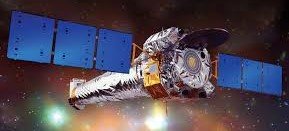
These telescopes are designed to detect high-energy radiation from cosmic sources. They are essential for studying black holes, neutron stars, and supernovae, revealing the universe’s most energetic and violent events.
High-energy telescopes are specifically designed to detect high-energy radiation, such as X-rays and gamma rays, from cosmic sources. These telescopes are crucial for studying some of the universe’s most extreme and energetic phenomena, including black holes, neutron stars, and supernovae.
Black holes, regions of spacetime exhibiting gravitational forces so strong that nothing can escape from them, emit high-energy radiation as matter accretes around them. This radiation is often in the form of X-rays, which can be detected by X-ray telescopes. These observations help astronomers understand the behavior of matter in the vicinity of black holes, providing insights into the fundamental nature of gravity and the behavior of matter under extreme conditions.
Neutron stars, the remnants of supernova explosions, are incredibly dense and often emit high-energy radiation. Studying these emissions with high-energy telescopes allows astronomers to explore the properties of matter at nuclear densities, the magnetic fields that surround neutron stars, and the mechanisms behind their powerful radiation. This research contributes to our understanding of the life cycles of stars and the exotic states of matter that can exist in the universe.
Supernovae themselves are among the most energetic events in the universe, releasing vast amounts of energy in a short period. High-energy telescopes are essential for observing the aftermath of these explosions, including the shock waves that travel through space and the radioactive elements that are created. These observations help scientists learn about the processes that drive supernovae and the role they play in enriching the universe with heavy elements.
In summary, high-energy telescopes are indispensable tools for astronomers. They allow the study of the most energetic and violent events in the universe, providing crucial information about the nature of black holes, neutron stars, and supernovae, and helping to unlock the secrets of the cosmos.
How Telescopes Work
Basic Principles of Telescopes
The fundamental principle behind telescopes is simple: they collect and magnify light. By gathering more light than the human eye can, telescopes enable us to see faint and distant objects that would otherwise be invisible.
Light Collection and Magnification
Telescopes use large lenses or mirrors to collect light and focus it into an image. The size of the lens or mirror, known as the aperture, determines the telescope’s light-gathering ability. A larger aperture means more light and better image quality.
The Role of Lenses and Mirrors
Lenses and mirrors are the backbone of telescopic design. Lenses refract (bend) light, while mirrors reflect light to form an image. The precise arrangement of these optical elements is crucial for producing clear and accurate images.
Astronomical Uses of Telescopes
Observing Celestial Bodies
Telescopes open up a world of possibilities for observing celestial objects. From the moon’s craters to the rings of Saturn, telescopes provide breathtaking views of our solar system and beyond.
Studying Stars and Planets
Astronomers use telescopes to study the behavior, composition, and evolution of stars and planets. By analyzing the light emitted by these objects, scientists can determine their temperature, age, and even the presence of exoplanets.
Exploring Galaxies and Nebulae
Telescopes allow us to peer into the depths of space and explore distant galaxies and nebulae. These cosmic structures hold clues to the universe’s origins and the formation of stars and planetary systems.
Telescopes and Space Exploration
Contribution to Space Missions
Telescopes have played a crucial role in space exploration missions. They have helped scientists map the surfaces of planets, study the atmospheres of distant worlds, and even search for signs of extraterrestrial life.
Telescopes on Satellites and Spacecraft
Many telescopes are launched into space to avoid Earth’s atmosphere, which can distort and block certain wavelengths of light. Space telescopes like the Hubble Space Telescope have provided stunning images and invaluable data from beyond our planet.
Famous Space Telescopes (e.g., Hubble Space Telescope)
The Hubble Space Telescope is perhaps the most famous space telescope. Since its launch in 1990, it has captured breathtaking images of galaxies, nebulae, and other celestial phenomena, contributing
significantly to our understanding of the universe.
Earth-Based Applications of Telescopes
Environmental Monitoring
Telescopes are not just for stargazing; they also play a role in environmental monitoring. Ground-based telescopes equipped with specialized sensors can track changes in Earth’s atmosphere, monitor air quality, and detect natural disasters like wildfires and hurricanes.
Weather Prediction and Climate Studies
Telescopes are essential tools in weather prediction and climate studies. By observing atmospheric conditions, scientists can improve weather forecasts and study long-term climate patterns, helping us understand the impacts of climate change.
Telescopes in Oceanography
In oceanography, telescopes are used to study ocean currents, monitor marine life, and explore the mysteries of the deep sea. Underwater telescopes provide valuable data for marine research and conservation efforts.
Telescopes in Amateur Astronomy
Hobbyist Telescopes
For amateur astronomers, telescopes offer an exciting opportunity to explore the night sky. Hobbyist telescopes range from small, portable models to more advanced instruments, allowing enthusiasts to observe planets, stars, and galaxies from their own backyards.
How to Choose a Telescope for Beginners
Choosing a telescope can be a daunting task for beginners. Factors like aperture size, portability, and budget play a crucial role in selecting the right telescope. Many online guides and communities offer advice to help newcomers find their perfect match.
Popular Amateur Astronomy Events
Amateur astronomers often gather for star parties and events where they share their passion for stargazing. These gatherings provide a chance to observe celestial phenomena, exchange knowledge, and connect with fellow enthusiasts.
Scientific Discoveries Made with Telescopes
Major Breakthroughs in Astronomy
Telescopes have been instrumental in making major astronomical breakthroughs. They have enabled the discovery of new celestial objects, improved our understanding of cosmic phenomena, and provided evidence supporting theories like the Big Bang.
Discoveries of Exoplanets
One of the most exciting areas of research is the discovery of exoplanets—planets orbiting stars outside our solar system. Telescopes equipped with advanced sensors have detected thousands of exoplanets, some of which may harbor conditions suitable for life.
Understanding the Big Bang and Cosmic Evolution
Telescopes have played a crucial role in unraveling the mysteries of the Big Bang and cosmic evolution. By studying the universe’s expansion and the cosmic microwave background radiation, scientists have gained insights into the origins of the cosmos.
Innovations in Telescope Technology
Advances in Lens and Mirror Design
Recent innovations in lens and mirror design have led to more powerful and precise telescopes. Techniques like adaptive optics and segmented mirrors have improved image quality, allowing astronomers to observe celestial objects with unprecedented clarity.
Adaptive Optics and Interferometry
Adaptive optics technology corrects for atmospheric distortions, enabling ground-based telescopes to achieve sharp, high-resolution images. Interferometry, on the other hand, combines data from multiple telescopes to create detailed observations that rival those of space-based telescopes.
Future Trends in Telescope Development
The future of telescopes holds exciting possibilities. Advances in technology are paving the way for next-generation telescopes that will explore the universe in greater detail. Innovations like artificial intelligence and robotics are expected to revolutionize telescope design and data analysis.
Telescopes and Education
Educational Uses of Telescopes
Telescopes are invaluable tools for education, inspiring students to explore the wonders of science and astronomy. Schools and universities often use telescopes to teach students about celestial objects and the scientific method.
Inspiring the Next Generation of Scientists
Telescopes have the power to ignite a passion for science and exploration in young minds. By engaging with telescopes, students can develop critical thinking skills and a deeper appreciation for the universe’s beauty and complexity.
Telescopes in Science Outreach Programs
Science outreach programs frequently utilize telescopes to engage the public and promote scientific literacy. Public observatories, planetariums, and astronomy clubs provide opportunities for people of all ages to experience the thrill of stargazing and learn about the cosmos.
Challenges Facing Modern Telescopes
Light Pollution
Light pollution is a significant challenge for astronomers. The bright lights of cities can obscure the night sky, making it difficult to observe faint celestial objects. Efforts to reduce light pollution are essential for preserving dark skies and enabling accurate astronomical observations.
Atmospheric Disturbances
Earth’s atmosphere can distort and scatter light, affecting the quality of observations made by ground-based telescopes. Atmospheric disturbances, such as turbulence and weather conditions, pose challenges for astronomers seeking clear and precise images.
Technical and Financial Challenges
Building and maintaining telescopes require significant technical expertise and financial resources. Large observatories and space telescopes involve complex engineering and substantial funding, often necessitating international collaboration and support.
The Future of Telescopes
Next-Generation Telescopes
The next generation of telescopes promises to push the boundaries of astronomical research. Projects like the James Webb Space Telescope and the Extremely Large Telescope are poised to unlock new frontiers in our understanding of the universe.
Space-Based vs. Earth-Based Telescopes
The debate between space-based and Earth-based telescopes continues. While space-based telescopes offer unparalleled access to the cosmos without atmospheric interference, Earth-based telescopes provide cost-effective and adaptable solutions for ongoing research.
The Role of AI and Robotics in Telescopes
Artificial intelligence and robotics are set to play a significant role in the future of telescopes. AI algorithms can process vast amounts of data quickly and efficiently, while robotic telescopes can autonomously conduct observations and adapt to changing conditions.
Cultural and Artistic Impact of Telescopes
Influence on Art and Literature
Telescopes have left an indelible mark on art and literature, inspiring countless works that explore the relationship between humanity and the cosmos. From paintings of starry nights to poetic musings on the universe, telescopes have fueled creativity and wonder.
Telescopes in Popular Culture
Telescopes have found their way into popular culture, appearing in movies, TV shows, and literature. They symbolize exploration, discovery, and the quest for knowledge, capturing the imagination of audiences worldwide.
The Philosophical Impact of Telescopic Discoveries
Telescopic discoveries have profound philosophical implications. They challenge our understanding of our place in the universe and prompt us to ponder questions about existence, life beyond Earth, and the nature of reality.
Conclusion
Telescopes are not just instruments for observing the night sky; they are powerful tools that have transformed our understanding of the universe. From revealing distant galaxies to aiding in environmental monitoring, telescopes have diverse applications that impact both scientific research and everyday life. As technology continues to advance, the future of telescopes holds exciting possibilities for uncovering the universe’s deepest mysteries and inspiring the next generation of explorers.
FAQs
What are the main types of telescopes?
The main types of telescopes include optical telescopes (refracting, reflecting, and catadioptric), radio telescopes, infrared telescopes, and X-ray/gamma-ray telescopes. Each type is designed to observe specific wavelengths of light and serve various scientific purposes.
How do telescopes help in space exploration?
Telescopes play a vital role in space exploration by observing celestial bodies, studying distant stars and galaxies, and providing data for space missions. They help scientists map planetary surfaces, analyze atmospheric conditions, and search for signs of extraterrestrial life.
What are some famous telescopic discoveries?
Famous telescopic discoveries include the identification of exoplanets, the observation of distant galaxies, and the study of cosmic phenomena like black holes and supernovae. Telescopes have also provided evidence supporting theories like the Big Bang and cosmic expansion.
How do amateur astronomers use telescopes?
Amateur astronomers use telescopes to observe celestial objects from their own locations. They participate in stargazing events, share observations, and contribute to citizen science projects, enhancing our understanding of the night sky.
What are the latest advancements in telescope technology?
Recent advancements in telescope technology include improvements in lens and mirror design, adaptive optics, and interferometry. Future trends involve AI-driven data analysis, robotic telescopes, and next-generation observatories that promise to revolutionize astronomical research.

